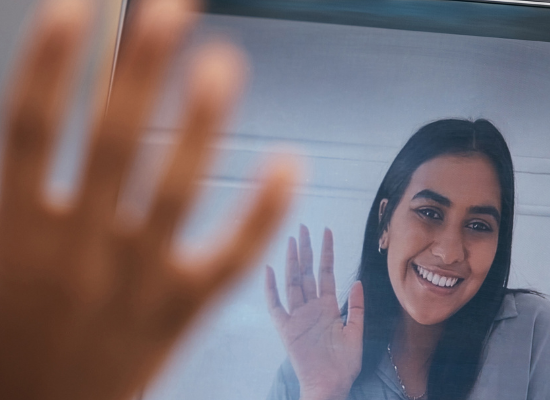
Stephanie Hepburn is a writer in New Orleans. She is the editor in chief of #CrisisTalk. You can reach her at .
As a researcher at the Mount Sinai Health System in New York, Dr. Sidney Hankerson has studied how faith leaders are a mental health access point, helping address mental health disparities in Black and Hispanic communities. “Pastors are frontline mental health professionals, regardless of race or religious affiliation,” he said. However, the same can’t yet be said for substance use challenges. “Unfortunately, in many faith communities, there’s a higher level of stigma around substance use than depression or anxiety—it’s often viewed as a character flaw, a personal weakness.” That sparked him to partner with Dr. Jermaine Jones from Columbia University Irving Medical Center to develop a study of naloxone delivery through a network of faith-based organizations in New York City, where drug overdose mortality is highest among Black and Hispanic populations. Naloxone can quickly reverse an opioid overdose.
The study, grant-funded by the National Institute on Drug Abuse (NIDA), tailors an evidence-based overdose education and naloxone distribution program for Black churches. Access to the life-saving medication is critical, especially in marginalized communities. Unfortunately, institutional racism is a massive barrier to people in Black communities dialing 911 when they witness a suspected opioid overdose. “Many Black community members are hesitant to call 911 after a suspected overdose due to fear of negative interactions with the police,” said Dr. Hankerson. He hopes that distributing naloxone in a faith-based setting will help reduce opioid deaths.
“Our first goal is to increase awareness about the opioid epidemic in communities of color and reach people where they are, in trusted community settings,” he said.
In New York City, there are gaps in naloxone training and access among Black and Hispanic people who use opioids. The opioid crisis is often thought of as a white suburbia or Appalachian problem, which has resulted in increased training, access, and utilization of naloxone in those areas. “It is less known publicly that the opioid overdose crisis has transitioned to Black and Hispanic communities in urban settings,” said Dr. Hankerson. Other drugs, like marijuana and cocaine, are increasingly laced with fentanyl and other manufactured opioids. “Also, fentanyl use in itself has morphed into its own massive epidemic.” Overdose deaths in the United States increased by 30% between 2019 and 2020 and rose by 14.9% in 2021. Deaths from synthetic opioids have continued to grow.
To normalize talking about substance use disorders in the church, the program will include pastors sharing their stories of navigating a substance use disorder, getting treatment, and recovery. “Having a pastor share their struggles with drug use and talk about the importance of treatment will chip away at the stigma associated with it,” said Dr. Hankerson.
He and his colleagues will record interviews with pastors, people with opioid use disorder, family and friends of people with opioid use disorder, and people with other substance use disorders. “We’ll then analyze the data to determine how best to use the video intervention with congregations,” he said. The program will also do outreach in person.
How faith leaders have become frontline mental health responders has evolved, giving Dr. Hankerson hope that the same can transpire for substance use. “Mental health conditions were often attributed to a lack of faith or personal sin,” he said. There’s still a lot of work to do around mental health stigma in religious settings, but today, faith leaders are increasingly open about their mental health challenges and care.
In 2019, Michael A. Walrond Jr., senior pastor at First Corinthian Baptist Church in Harlem, shared with The New York Times that for some people, “religion has been more bruising and damaging than healing and transformative.” Walrond has worked to make mental health care far more accessible in Harlem by opening the HOPE Center (Healing On Purpose and Evolving), an expanding, free-standing community mental health clinic. “Pastor Walrond has been at the forefront of sharing his own journey of having a chronic medical condition, episodes of depression, and then going into therapy,” said Dr. Hankerson.
The center provides clinic services free of charge. It uses a short-term model, where people receive 10-12 individual therapy sessions. “If people need ongoing treatment, the center has partnerships with other clinics for longer-term care,” said Dr. Hankerson. While people don’t have to be a member of the church to obtain care, the center is a space where people can talk about their faith. “It’s also a space that’s open to the LGBTQ community. Thirty percent of the HOPE Center’s patients identify as LGBTQ.”
Through grant funding, Mount Sinai will soon increase the center’s capacity by hiring an additional social worker, and psychiatry residents will soon begin doing rotations there. “The next generation of psychiatrists will be able to experience how to deliver faith-affiliated psychiatric care,” said Dr. Hankerson. It’s a model he believes needs to be replicated nationally.
Stories, like that of Walrond, resonate with people. The most effective way to reduce stigma about mental health or substance use conditions is contact, said Dr. Hankerson. That’s why he and his colleagues are centering the faith-based naloxone study on a pastor who has lived experience with substance use. “Personal narratives help people to see, feel, and connect in a way that statistics can’t,” he said. “These stories demonstrate the power of hope and recovery in a way that can change attitudes and make people more receptive to seeking care.”
While he believes the Covid pandemic has pushed people to be more open to getting mental health care than ever before, how a story affects someone can depend on similarity and shared experiences. “There is research evidence showing that when a Black woman tells her story about seeking mental health care, it has a greater impact on reducing stigma with other Black women than with white women,” he said. “This suggests that accounting for people’s racial and gender concordance, along with other intersecting identities, is important to connect with the audience and reduce stigma.”
Similarly, marketing 988—the three-digit number for mental health, suicidal, and substance use crises—must also have targeted outreach approaches. “Marketing segmentation is how to get the word out there,” said Dr. Hankerson. For example, he points to a 988 public service announcement by Rev. Dr. Que English, director of the Center for Faith-based and Neighborhood Partnerships at the U.S. Department of Health and Human Services, and Choose Healthy Life Black Clergy Action Plan faith leaders. In the PSA, she shares how her family was adversely impacted by the statement, “What goes on in the house stays in the house.” “It wasn’t long after that my nephew, 14 years old, hung himself,” she said. “Wasn’t long after that when you found my brother pushing a shopping cart in the middle of the street.”
Dr. Hankerson is especially concerned about the mental health of Black adolescents. “Their rates of depression, suicide, and self-harm are rising.” In 2021, the Centers for Disease Control and Prevention collected data from over 17,000 high schoolers. The survey revealed that while Black high schoolers were less apt to report persistent sadness, hopelessness, or poor mental health, they were more likely to have made a suicide attempt than Asian, Hispanic, multiracial, Native Hawaiian or Pacific Islander, or white high schoolers.
To engage teens, he’s partnering with Dr. Sherry Molock and Dr. Peter Wyman on Haven Connect, a depression and suicide prevention program in Black churches for teens 13 to 19. The program works to help teens develop positive coping skills and reinforce protective factors through Sunday school activities, Bible study, and sermons. “We are examining where young people are and how we can implement strength-based, evidence-based interventions in these settings to kids.”
This article was originally published on May 2, 2023.









